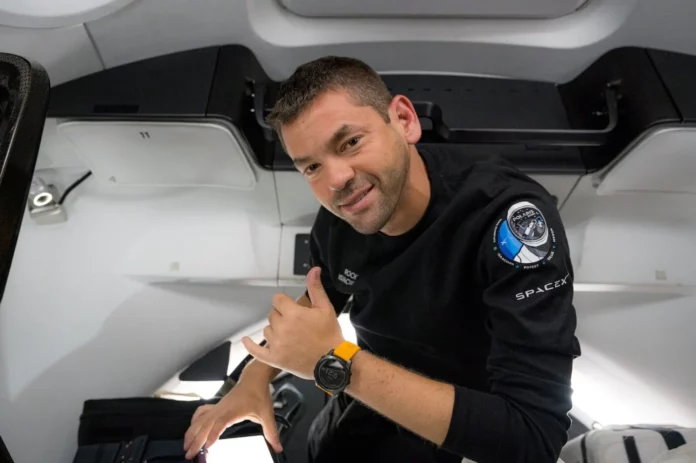If Jared Isaacson becomes NASA administrator, and he most likely will, judging by his first public comments on the matter, Mars will be the agency’s priority under the Trump administration, not the Moon as it was before.
Jared Isaacson has been active on social media since Trump named him as the next head of the US space agency, which he did in early December. But the astronaut has mostly limited himself to posting about flying airplanes, his payment company Shift4, and retweeting space photos without comment.
On February 16, he offered a look at what NASA might be focusing on over the next four years. Retweeting a photo of Mars, Isaacson said the image makes him feel “energized about the future.” He believes that it is “so important for people to understand the profound implications of sending humans to another planet.”
The post seems to indicate that traveling to Mars with a crew will be a key priority for NASA, an agency that has been in a state of uncertainty since Trump was elected president. Like many other government agencies, it appears to be facing severe cuts in addition to massive layoffs. Boeing, a major NASA contractor, is preparing to lay off hundreds of employees associated with its space division, citing the expected revision of the Artemis program. During his inaugural address, Trump mentioned planting the American flag on Mars, but did not mention the Moon.
NASA’s Artemis program has been plagued by numerous delays and cost overruns. The launch of Artemis 2, which was supposed to bring American astronauts into lunar orbit, was originally scheduled for November 2024, but has now been postponed to April 2026. The next mission, which will set foot on the lunar surface for the first time since the Apollo program, was supposed to launch later this year, but now will not take place until at least mid-2027.
The goal of Artemis, in addition to returning to the Moon after such a long time, is to develop the necessary technologies, skills and experience for a future mission to Mars. SpaceX CEO Elon Musk has complained that Artemis is a distraction and that a wiser approach would be to go directly to Mars. With a direct connection to the White House, Musk is likely to influence the future direction of NASA. And with Isaacsman potentially heading the space agency, the future of the Artemis program is now in serious doubt.
Prior to his X-post, Isaacsman had largely avoided commenting on what he believed to be NASA’s priorities. The exception was a 45-minute fireside chat at the Space Force Association’s Space Force Conference on December 11. During this conversation, Isaacson stated that he believes it is necessary for the United States to send humans to the Moon and Mars, noting that the development of technology for these missions could “change the entire balance of power here on Earth.”
In his X-post, Isaacson clarified that manned missions to Mars would contribute to the development of “systems, countermeasures, and pharmaceuticals to sustain human life in extreme environments” and ultimately bring economic, technological, and social benefits “for all of humanity.”
“This achievement will allow humanity to survive beyond Earth, serving as a shield against the catastrophic events that have shaped our planet’s past and will inevitably happen again,” he wrote. “This is a critical step in overcoming the Great Filter,” a reference to the notion that all intelligent civilizations in the universe were wiped out by catastrophes before they could sufficiently master space travel.
During his speech at the conference, Isaacson did not mention any specific policies or programs that he would choose to study as the new head of NASA, but he did point out the need to increase research into the effects of space travel on the human body. This area, he said, could become more important if the “Space Force Sentinels” (as the military and civilian personnel of the Space Force are called) travel to the Moon or Mars en masse in the future.
He also praised SpaceX, a private company that has become an integral part of the United States’ space strategy and has received government contracts worth about $22 billion. Musk, as chairman of DOGE, has faced criticism over potential conflicts of interest due to the significant government contracts awarded to his companies. The White House has stated that Musk will independently monitor any conflicts of interest.
Isaacson has his own ties to SpaceX: he has flown on two private space trips launched on the company’s rockets, including the Polaris Dawn mission in September.
The billionaire nominee also highlighted several other contractors who received praise at the conference, including Blue Origin and Jeff Bezos’ Rocket Lab. According to him, the rise of the commercial space industry will allow the United States to “really figure things out and take risks.”
Although Musk has said that a manned flight to Mars could take place as early as 2028, Isaacson would not be tied to that date. In response to the comment, he wrote that he is “on the outside looking in, learning, and eager for the opportunity to contribute to this great endeavor,” adding that the decision on such a mission “rests with the Senate.”
No date has yet been set for Isakman’s confirmation hearing, but given how even Trump’s most controversial (and in some cases, unqualified) nominees have fared, there is little to indicate that he will face any serious opposition.









